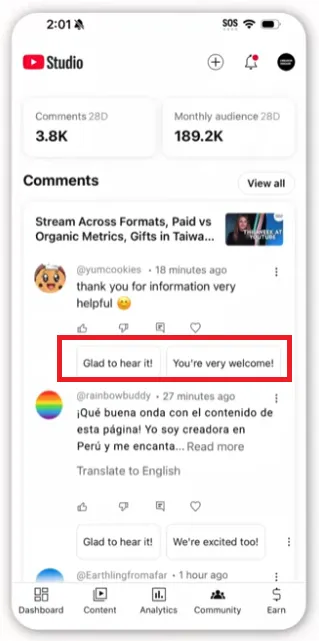YouTube is testing out a new way for users to interact around shared content, while it’s also added enhanced controls for product timestamps in clips, among its latest round of app updates.
First off, YouTube’s trying out a new option that it says will “make it easy for you to share videos you love (long-form, Shorts and live streams) and have conversations about them directly on the YouTube mobile app.”
Using this new process, which is being tested with users in Ireland and Poland, users will essentially be messaging each other within the YouTube app. Users are first required to send an invite to ask someone if they’ll accept your shared content, and then, if they accept, the user will then be able to share posts, and chat about videos in the app, which is like a private DM conversation specifically related to YouTube clips.
YouTube says this has been a highly requested feature, but it’s starting out small, as it gets a sense of how the process will work in discussing content via dedicated YouTube chat.
YouTube’s also giving creators more control over timestamps in clips, making it easier to shift around specific notes that appear on the playback through a new drag-and-drop tool.
As you can see in this example, the improved timestamp tool will make it easier to tag moments in your videos, by simply moving them along the playback slider at the bottom of the editing screen.
That will help to ensure that your markers appear exactly as you want them in the playback, helping to better align with mentions in-stream.
YouTube’s also looking to make product-related timestamps less disruptive in mobile portrait mode, by adding a product shelf below the playback window, as opposed to having a pop-up notification appear on-screen.

That may also make them stand out less as people watch, though YouTube also notes that these notifiers will remain active below the playback window till another timestamp product marker appears.
That could even out any loss of engagement or awareness as a result.
YouTube’s also expanding its AI comment reply recommendations to more users, so you’ll have a suggestion of what to say in response to video comments.

YouTube’s AI suggestions make it easier to quickly engage with comments on your clips, though they also take some of the connective benefits out of this feature, by providing hollow, generic responses to user notes.
Maybe that’s important, maybe not, it probably depends on the specifics of the comment, but now, more channels will have the option to quickly tap an AI reply to a viewer response.
YouTube says that its AI suggestions will now be available in all versions of YouTube Studio (mobile and web), while its AI prompts will also be available in 100+ languages (you can see an alternate language variation in the screenshot above).
As explained by YouTube:
“Comment reply suggestions are completely optional and editable before posting. Simply tap the suggestion to edit before replying”
Maybe handy, maybe another AI overreach. You decide.
Finally, YouTube has also been taking more action of late to address channels that are posting content designed to mislead and game its systems, with YouTube using automated detection to suspend and remove channels that it finds engaging in such activity.
Which has prompted a flood of complaints about incorrect removals, but YouTube says that it’s reviewed most cases, and found very few errors in enforcement.
“In conversations with creators this past week, we identified a few opportunities to provide more education around certain policies and what is not allowed on YouTube. For example, in the channel terminations we reviewed and upheld, we saw examples of creators mass uploading content with the sole purpose of gaining views, likes or other metrics; mass uploading auto-generated or low-value content; mass uploading content scraped from other creators with minimal edits; content misleading people into clicking off-platform; content that would add shocking violence at the end of an otherwise ‘cute’ or animated video; and other such content that violates our Spam, deceptive practices and scams policies.”
YouTube says that “only a handful” of its automated enforcement actions were shown to be incorrect, and that it stands by the removal of channels based on its evolving process.
Which means that more of this type of activity is being detected and stamped out, using auto-moderation, lessening their impact, but also hurting scam channels and aggregator accounts looking to make money from YouTube clips.



